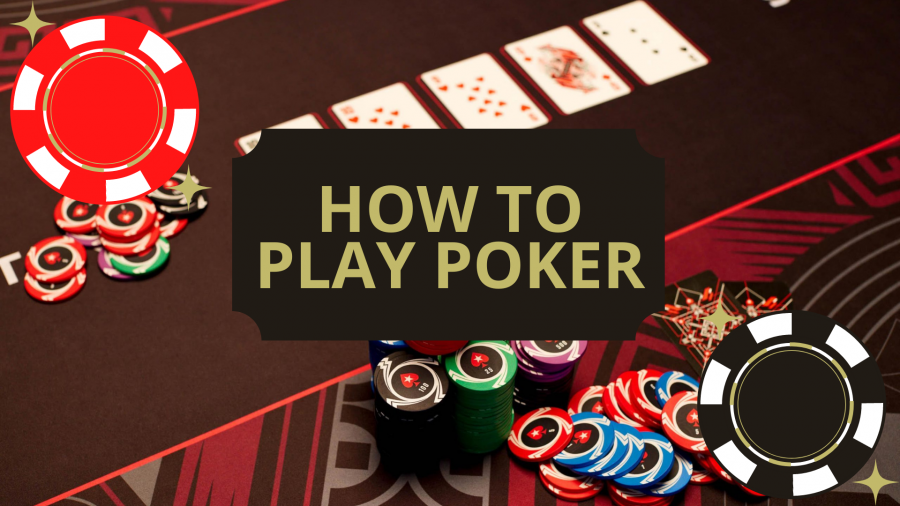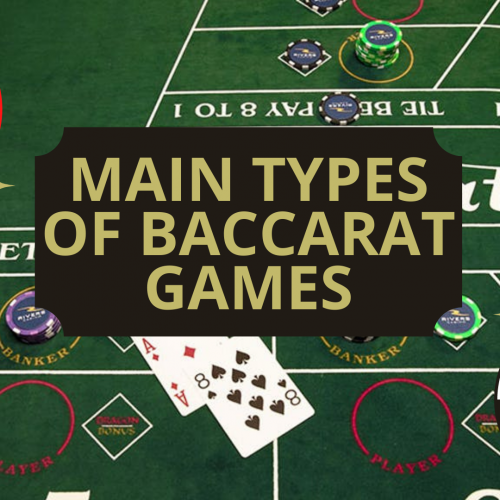More and more players are choosing to play poker directly from their home. So they don’t have to go to specialized institutions and look for someone to play the next game with. Millions of players around the world, from beginners to professionals, are ready to play with them online. Moreover, the player can independently choose both who he wants to play with and what the stakes in this game will be. We want to let you understand what poker is, what poker rules are and how to play poker successfully in online casinos.
When we say “classic poker”, we mean, of course, Texas Holdem. Today it is the most popular type of poker. A huge number of live poker tournaments are held precisely on Unlimited Texas Hold’em. According to some estimates, approximately 95% of all games and tournaments in online poker also take place on this poker variety of card games.
To start playing Texas Holdem, you just need to remember the poker rules and learn poker hands.
Poker rules
Texas Holdem is played with a standard deck, which consists of 52 cards in denominations from two to ace. Depending on whether there are restrictions on the size of bets or not, there are 3 types of Texas Holdem.
Texas Holdem Blinds
The forced bets, known as blinds, are a requirement for playing classic poker. Even before obtaining pocket cards in their hands, two participants sit at the table to the left of the dealer and make the blinds in each hand. There are both small and large blinds. The small blind is directly behind the dealer, while the big blind is to the left of the small blind.
Poker hand ranking
There are 10 combinations of poker hands in total in Texas Holdem:
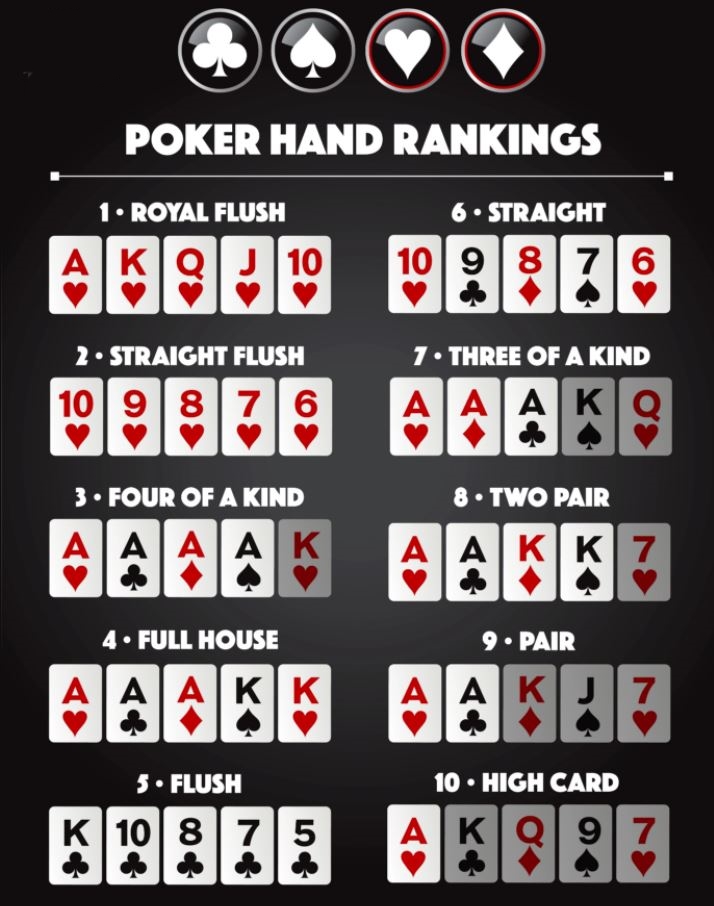
| Royal Flush – the same as Straight Flush but only from 10 to Ace | Straight – five cards of consecutive value (suit may be different) |
| Straight Flush – any combination of consecutive card values of one suit | Three of a kind – a set of three cards of the same value |
| Four of a kind – four cards of the same calue | Two pairs – two cards of the same value and two cards of another same value |
| Full House – a set of three cards of the same value and a pair of cards of one value | Pair – a pair of cards with the same value |
| Flush – five cards of the same suit (not consecutive values) | High Card – the highest card in hands (comparing with another player) |
Rounds of the game
1. Preflop
This is the first round of the poker game, which begins immediately after the dealer distributes pocker cards to all players at the table. Poker players examine their cards, assess their strengths and viewpoint, and then make a choice. If the hand is poor, the player will almost certainly submit it to the pass to avoid paying more money (chips). The same players with deep wallets will continue the game by placing bets. The player directly to the left of the large blind talks first – this is known as the UTG position (under the gun). This poker player, like everyone else, has many ways to join the game at the same time.
Options for poker players’ actions:
- A Call equalizes the previous stake, stake – the initial bet in the hand;
- A Raise is also an increase in the bet, but unlike a bet, a raise is an increase in the earlier bet;
- A Fold is a reset of one’s pocket cards, a refusal to engage further in the hand;
- All-in – bet on all your chips.
- A Re-raise is an increase in a stake that has previously been increased;
- A Check is a motion that is skipped.
Now when we understand what actions a player can take during the hand, let’s go back to the bidding rounds.
2. Flop
The second round of bidding in poker is a flop. The flop is the stage when the dealer deals with the first three common cards that players can use to make combinations. Poker players get more information on the flop. They understand the strength and perspective of their poker hands better, or they can already make some combinations. In theory, you can “catch” absolutely any poker combination from a pair to a royal flush on the flop.
Players need to carefully assess the situation, understand whether they need to play with these cards, or it will be easier to just throw them off and put bets next time
On the flop, the player sitting to the left of the dealer makes his first move.
3. Turn
When all bets on the flop are made, the dealer lays out the fourth common card, called the turn. The participants remaining in the hand by this time begin a new round of bidding again.
4. River
The final street of bidding in poker begins when the dealer takes out the last, fifth common card from the deck. Here the players already have the maximum amount of information. They already know the value of their poker hands and should roughly represent the potential strength of their opponents’ poker hands. On the river, you can increase the bank for the last time.
5. Showdown
This is not a bidding round, but it is the showdown that completes the hand if two or more players have reached the victorious end. Showdown is a “battle” between cards, which should determine who will be the winner of the hand and will take the pot, which was formed during four rounds of bidding. Everything is simple here – whoever has the best combination wins. Poker players begin to open with the person who sits to the left of the dealer.
Best strategy to play poker: what are the mistakes?
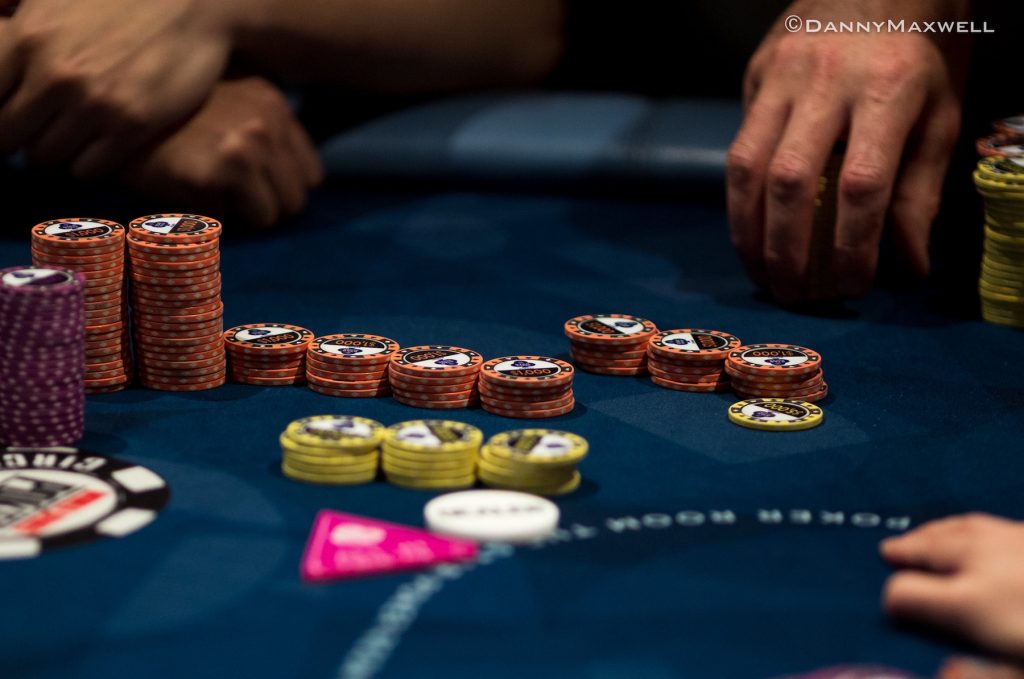
Poker is a game in which it is easy to understand the rules, but it is difficult to win consistently. Thousands of newbies sit down at real and virtual poker tables every year and, making the same mistakes, lose money.
Now we want to show you the best poker strategies and advice.
Mindless bluffs
Poker is complex and multifaceted. But under the influence of cinema, many are sure that this is just a game where they are bluffing. When such players first sit down at the table, they are already ready to portray strong combinations. But a good bluff requires knowledge and experience – it is important here against whom to bluff, what size of bets, and even what cards you have on your hand (because then the opponent does not have them). Beginners rarely think about this, they bluff monotonously and with a flourish – both on the flop, on the turn, and on the river, they quickly bet half of the pot, not paying attention to the cards that have come out. They do not understand that if their opponent is a good player, then after a flop call and a turn, he will hardly throw his cards into a pass on the river. As a result, an ill-conceived bluff leads to the loss of a huge number of chips.
Inattention to the opponent’s game
Poker is a game with incomplete information, unlike, for example, chess. And the task of a good player is to look for all possible ways to extract this information. Novice poker players sometimes completely forget about the existence of an opponent.
Limps
Limp is a bet on a preflop of the size of one big blind. A limp cannot be called a uniquely bad game — it is also used by some good players if it is part of a balanced strategy. Beginners don’t have any balanced poker strategy, they just make the lowest possible bet, because, with their not very strong hand, they want to see the flop cheaper. Experienced players will respond with a bet of two and a half or three big blinds, forcing a less experienced opponent to deposit chips in the pot, and then throw the cards into a pass on one of the streets in response to aggression.
Lack of bankroll management
All poker professionals make sure that they have enough money to play. They won’t get into a $10 tournament if they have $100 in their account. It’s not even that one particular tournament can be lost due to bad luck.
This approach protects them from making wrong decisions due to the pressure of money. Novice players rarely follow the bankroll and this affects their game — they are tightened the closer they get to the prizes, and they are afraid of big bets even with strong combinations. And once they get into the prizes in the tournament, such players stop playing at all, trying not to win, but just to sit as long as possible.
You can go to big events without a threat to the bankroll through qualifying tournaments, in which players receive tickets to major events as prizes.
Too passive at a game
In poker, it is impossible to win by passive play. Turn on any stream of a professional player — he will bet more often than he will make a check. And often these are big bets, and often such pressure will force opponents to throw their cards into the pass. Many novice players play passively, not trying to beat their opponents and paying attention only to their cards. If they don’t hit the board, they make a check and stop fighting. Opponents understand everything and take the bank with a bluff.
Excessive love for aces and matching hands
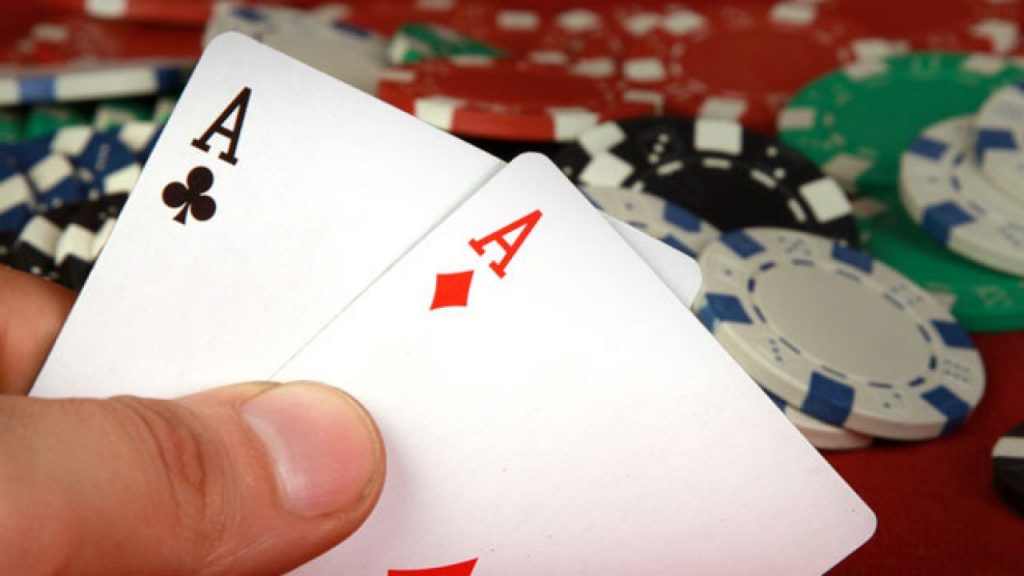
Beginners often do not know how to choose hands for a draw, and tend to see a flop with any hand that has an ace in it. This is a big mistake — an ace doesn’t guarantee victory, but rather will lead to a loss against more experienced players who participate in the hand only with stronger aces in their hands.
Another favorite type of hands for beginners is the matching hands. 9/5, J/2 – if the cards are of the same suit, you need to participate in the hand. This approach often leads to major defeats. For example, Dave entered the distribution with a call with a hand of 9/5. There is also Alex in the bank — a strong and experienced player who has been looking at Dave for a long time and understood everything about his style.
On the flop, they put A/2/8. Alex makes a bet in half of the pot, and Dave responds with a call. 2 appears on the turn, Dave makes a huge bet almost in the bank, Dave is confused, but still calls. No diamonds on the river — Dave loses a big pot.
Here Dave would have to throw off another on the turn, because according to poker mathematics, he needs to answer a bet in the bank, only having 33% to win. With a flush draw on the turn, Alex has only about 20%. In addition, Alex perfectly understands what kind of hand his opponent has, and will not let him win extra chips if a tambourine appears on the river.
Tilt
Tilt is a loss of control over yourself because of what happened at the table. Poker is rich in opportunities to get upset — here you can lose with a 97% chance of winning, or just lose a big stack in a couple of hands, even if you play it perfectly and correctly. Beginners fall into a tilt from this, start making huge bets with not very strong hands, get angry and insult opponents, and try to knock them out of the bank with unjustified bluffs. In a tilt, you can accidentally win a big pot, but in a long-distance, the tilting player will lose everything.
Meaningless bets
A good poker player is aware of the purpose for which he makes each bet. The goals are different — to get paid from weaker hands (this is called “for good”), to knock out stronger hands (this is a bluff), or to prevent the opponent from completing the combination (“for protection”). Novice players often bet just like that, without any purpose. Some simply place the lowest possible bet on each street without even a hint of a winning combination, others — put half of the pot just like that. All this leads to losing money, if not in a specific hand, then at a distance — for sure.
So, we have analyzed the rules of poker, poker hand ranking, and poker strategy. We hope this article was useful for you and wish you good luck in your future poker activity.


